
Customer service plays a key role in business success. But, these days, customer service trends are shifting. Customers are placing more importance on the interactions that they have with your product and its designated support team than on the product’s main features.
In this context, providing excellent customer service has become more critical than ever. As 2025 unfolds, here are some of the latest customer service trends that you should be aware of and leverage to stay ahead of the curve.
1. AI for simple support requests
Artificial intelligence (AI) has been at the forefront of customer service trends since the COVID-19 pandemic.
This can be seen with businesses’ increased use of chatbots, virtual assistants, and other automated tools. Here are the most popular AI-powered mechanisms and what they do best.
- Chatbots: Provide real-time answers to queries, can handle large requests, offer 24/7 support, and allow agents to focus on more complex tasks.
- Personalized recommendations: Analyze customer data to make personalized recommendations, which helps clients find what they need on the spot and thus boost sales.
- Predictive maintenance: Monitor equipment and detect potential issues before they become a problem, which can reduce downtime and improve customer satisfaction.
- Sentiment analysis: Determine customer sentiment by diving into customer feedback (social media comments, surveys, ratings, etc.) and thereby identify areas for improvement.
- Voice assistants: Provide quick and easy access to information, resulting in a convenient and customized customer experience.
These AI-powered tools enable brands to scale their services by providing quality customer support. They can respond to commonly asked questions and resolve issues faster.
🤖 A recent survey indicates that 39% of consumers in the United States feel that AI is simplifying their lives. They also expect it to streamline their interactions with brands.
2. Personalized customer experiences
Everyone loves something that is tailored exclusively for them. That is why personalization has become paramount. McKinsey and Company found that 71% of consumers expect businesses to deliver personalized interactions.
You can use data analytics to understand customer needs and provide personalized experiences. For example, you can provide:
- Delivery service
- Product recommendations
- Customized support interactions
However, if you want to take your personalization game to the next level, try hyper-personalization. As opposed to traditional personalization (addressing a customer by name or remembering their basic preferences), hyper-personalization delves much deeper. It leverages extensive data analysis to offer a highly individualized customer experience.
This approach is becoming increasingly important. Customers now expect brands to instantly recognize them and have immediate, comprehensive knowledge of their past interactions across various channels.
Here are several ways in which customer service tools can enable hyper-personalization.
- Data integration and analysis: By integrating data from sources like purchase history and browsing behavior, companies can gain a holistic view of each customer. Advanced analytics and AI can then be used to interpret this data.
- Real-time personalization: If a customer faces a problem while browsing a website, the tool can instantly provide tailored assistance based on their browsing history and previous interactions.
- Automated personalization: Chatbots can provide personalized responses to customer queries by accessing the customer’s entire interaction history and preferences.
Examples of brands leveraging this trend are Nike and Adidas. They have personalizable sneakers that customers can tweak to suit their preferences. Clinique, a popular skincare brand, offers customizable face creams and moisturizers that can be tailored to customers’ skin. So, if the “big guys” are doing it, you can too.
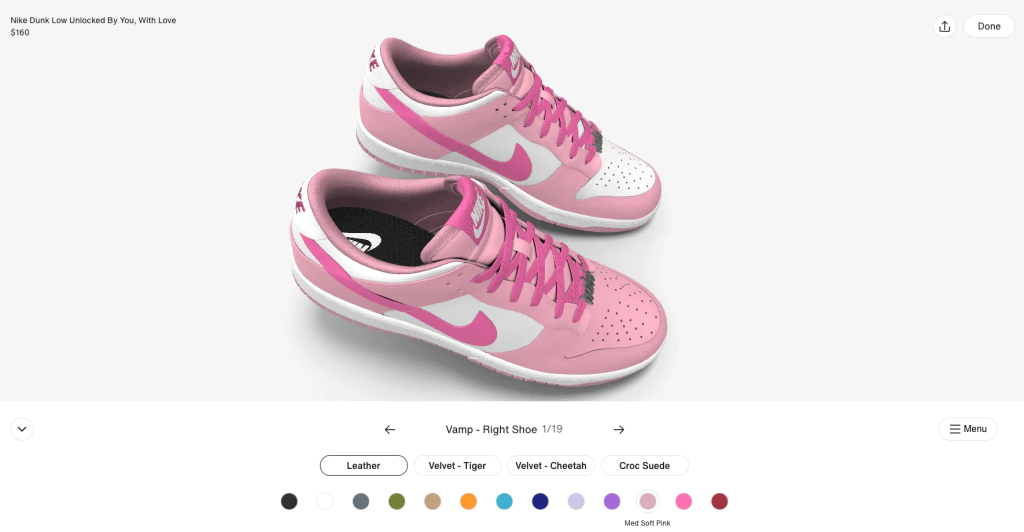
Image source: nike.com
💰 The good thing about this trend is that customers are willing to pay more to enjoy personalization. When provided with a personalized experience, 46% of them are likely to increase their purchases. So, you can be confident of patronage from new and returning customers.
3. Omnichannel support

Since the COVID-19 pandemic, the business ecosystem has shifted to digital, and consumers are more willing to interact with brands via multiple channels.
Consequently, businesses should provide support via email, phone, social media, and text messaging. They also need to integrate these channels to ensure seamless support and consistent customer experiences across various communication channels.
However, achieving true omnichannel is no easy task for businesses (customer service included). A genuine omnichannel experience requires a deep understanding of customer needs and a seamless integration of online and offline interactions.
It’s not just about having multiple channels but ensuring consistent, secure communication across them. This includes using advanced tools like customer relationship management (CRM) systems for tracking interactions. These systems can ensure a continuous customer journey without the need for repeating information across touchpoints.
You should always consider alternative forms of delivering support content to your customers. A quick and easy way to get users to your website or the right support channels is through the use of QR codes.
🤳 Adobe Express offers an innovative QR code generator that you can leverage to enhance your customers’ experiences. It provides quick access to information, resolves queries efficiently, and facilitates seamless interactions between customers and support teams.
4. Video support and mobile-first service
Video support leads the way towards a more interactive customer experience. It also enables support reps to provide more detailed, almost instant assistance.
When clients deal with complex technical issues, they can easily explain the situation using a visual recording or by initiating a video call. Reps can then provide step-by-step solutions using the same mechanism. This helps build more solid connections with your brand, as opposed to the ones that happen via email, for instance.
A mobile-first approach has become the norm as mobile devices take over the customer support landscape. This means optimizing apps not just in terms of being functional and responsive, but also in terms of being easy on the eye, intuitive, and instantly accessible on the go.
📲 Last year, mobile phones accounted for over 50% of all web traffic. So, you will need to provide fully responsive, mobile-friendly customer experiences to remain relevant as 2025 progresses.
5. Stronger self-service options

Consumers have become more self-reliant, mainly because of better access to the internet and tech tools. They would rather get answers themselves than wait in a queue.
Thus, empowering your customers to handle simple tasks — such as scheduling a delivery or upgrading their subscription — is one of the best things to do for your business.
Several studies show that 67% of customers would rather use self-service options than contact a customer service rep. Self-service tools or options can include the following:
- Chatbots
- “About us” page
- “Frequently asked questions” (FAQs) page with answers
🤖 65% of support decision-makers are already interested in investing in chatbots to enhance operational efficiency and boost satisfaction. Follow this customer service trend to reduce your costs and make your staff more productive, as they won’t be laden with simple tasks.
6. The rise of messaging apps
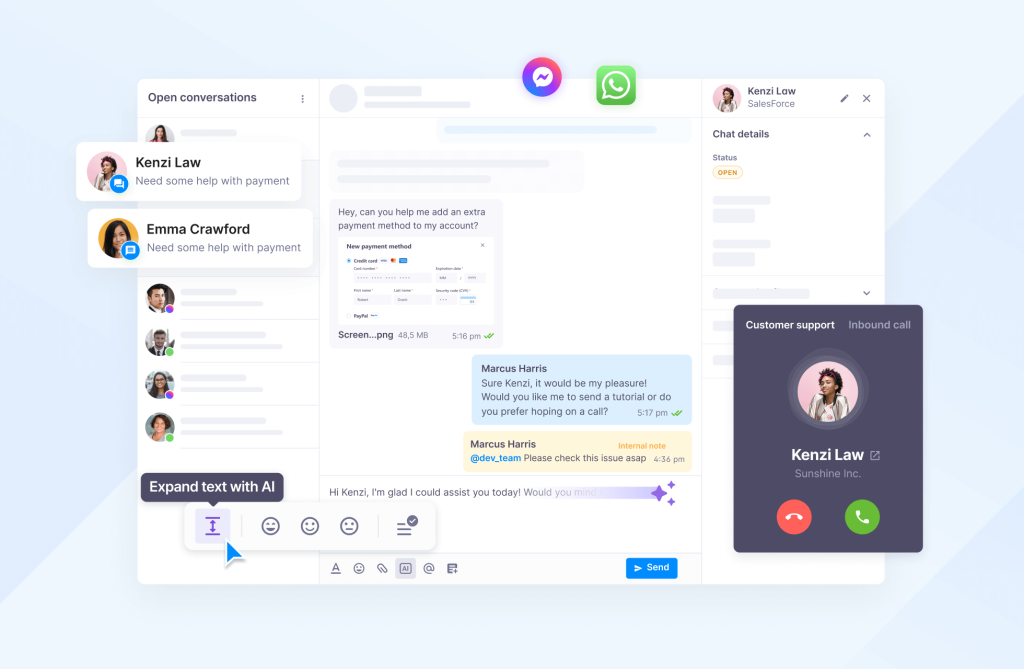
The rise of messaging apps as a customer service trend is driven by their increasing popularity among consumers. SMS and social media messaging apps like WhatsApp, Facebook Messenger, and WeChat have become the preferred communication channels for many people.
Businesses use them to provide tailored and timely customer support, thus increasing customer engagement.
7. Proactive or predictive customer support
Proactive or predictive customer support anticipates customer concerns and offers solutions beforehand. This approach contrasts the traditional reactive model, in which companies wait for customers to reach out with a problem or complaint before they address it.
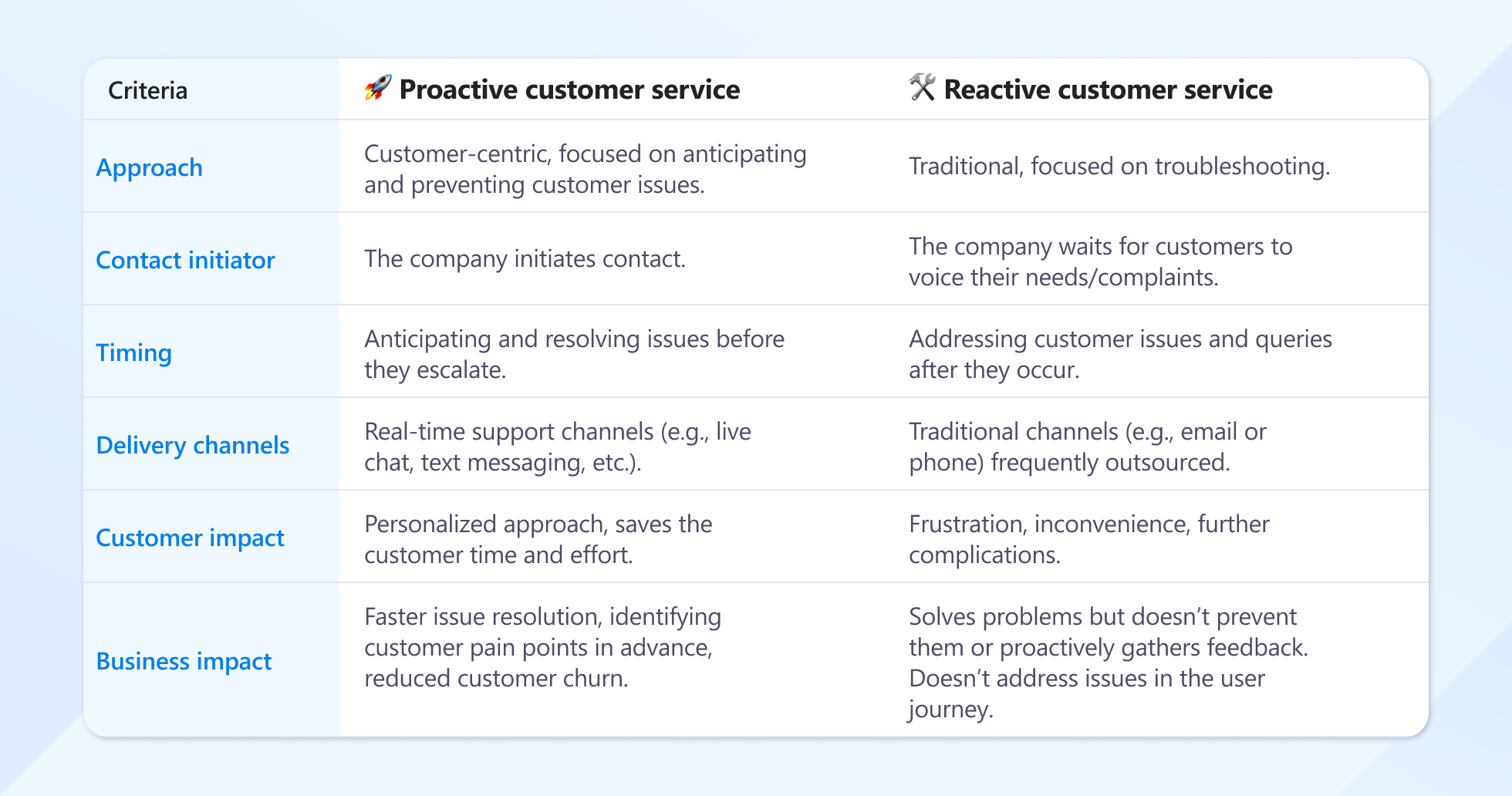
Here is how you can integrate proactive support into your customer satisfaction strategy.
- Inform customers beforehand of a possible delay in their delivery and allow them to reschedule.
- Introduce customers to new or improved products or services that they may enjoy based on their initial purchase.
- Provide customers with educational resources, such as tutorials or user guides to help them better understand how to use a product or service.
- Reach out to customers who have not recently engaged with your company and offer them support or incentives to encourage continued engagement.
👩🏻💻 In a study conducted by HelpLama, 92% of consumers were happy to be contacted proactively for support issues. However, doing this relies on gathering and analyzing data about customer behavior, feedback, preferences, and previous interactions with the company.
8. Empathy and emotional intelligence
Given that most consumers are highly receptive to any type of client–company communication, empathy and emotional intelligence have become indispensable aspects of customer service.
Many companies are training their customer service representatives to develop their communication skills and emotional intelligence. They also incorporate these skills into their marketing strategies to build long-term customer relationships and gain a competitive advantage.
For context, they use customer feedback and data to identify pain points and common customer complaints. Afterward, they provide products and services that address these concerns and meet client needs.
9. Collaboration and knowledge-sharing
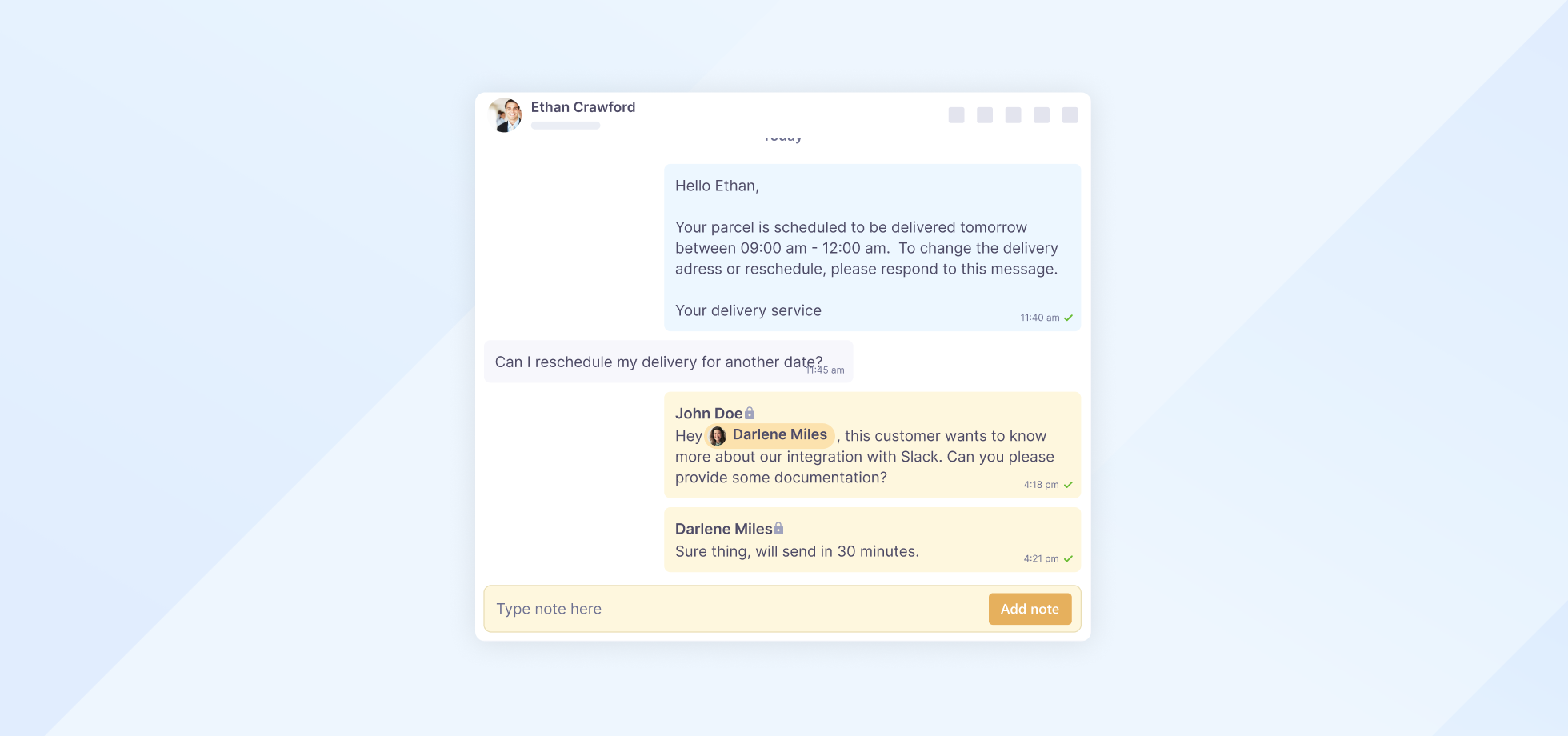
Building collaboration among your departments to enhance customer service involves breaking down the silos between departments and encouraging teams to work together.
For instance, a customer service team can collaborate with a product development team to better understand how a product works. They can then provide detailed, consistent answers to customer inquiries.
On the other hand, enabling knowledge-sharing in customer service involves creating and sharing a central information repository that both customers and customer service representatives can access. This repository may contain:
- FAQs
- API documentation
- Product descriptions
- Staff training materials
- Troubleshooting guides
- Internal product documentation
- Knowledge bases (articles and newsletters)
By leveraging this trend, you can improve the experience for all customer touchpoints. As a result, customers benefit from quicker and more accurate resolutions to their problems, while you benefit from increased loyalty.
We asked Cristina Nicolof, technical support manager at Tradeshift, to share a few words on how she encourages communication within her company. This is what she said:
“Part of my success as a manager was getting feedback from the team. We had regular meetings on how to improve processes. For a year, we did this actively and, in time, people got used to being involved and contributed with ideas all the time.”
10. Support-driven growth
Providing effective customer service has become part of the company culture. Nowadays, investments in customer service technologies are strategic and long-term.
Investing in machine learning, CRM, and data analytics tools pays up by providing actionable insights into customer preferences and behavior like never before.
Customer service portals have transformed into engagement and innovation hubs since the focus has shifted from reactive to proactive customer service. This leads the way to up-selling and cross-selling opportunities, fosters advocacy, and directly impacts the bottom line.
🥇 Companies using a customer-focused approach experience a 25% boost in loyalty and a 20% rise in customer confidence.
11. Customer feedback automation
This trend involves using customer service technology (with little or no human input) to collect, analyze, and respond to customer feedback. It allows companies to gather real-time customer feedback and use it to improve their products, services, and customer experience.
One typical example of customer feedback automation is using chatbots to collect and respond to customer opinions. Chatbots can be programmed to ask customers specific questions about their experience, gather data from their answers, and provide automated responses or solutions to common issues.
A trend example is auto-sending surveys post-purchase or customer service interactions. These feedback forms, like ratings and reviews, are analyzed by machine learning algorithms to pinpoint areas for improvement.
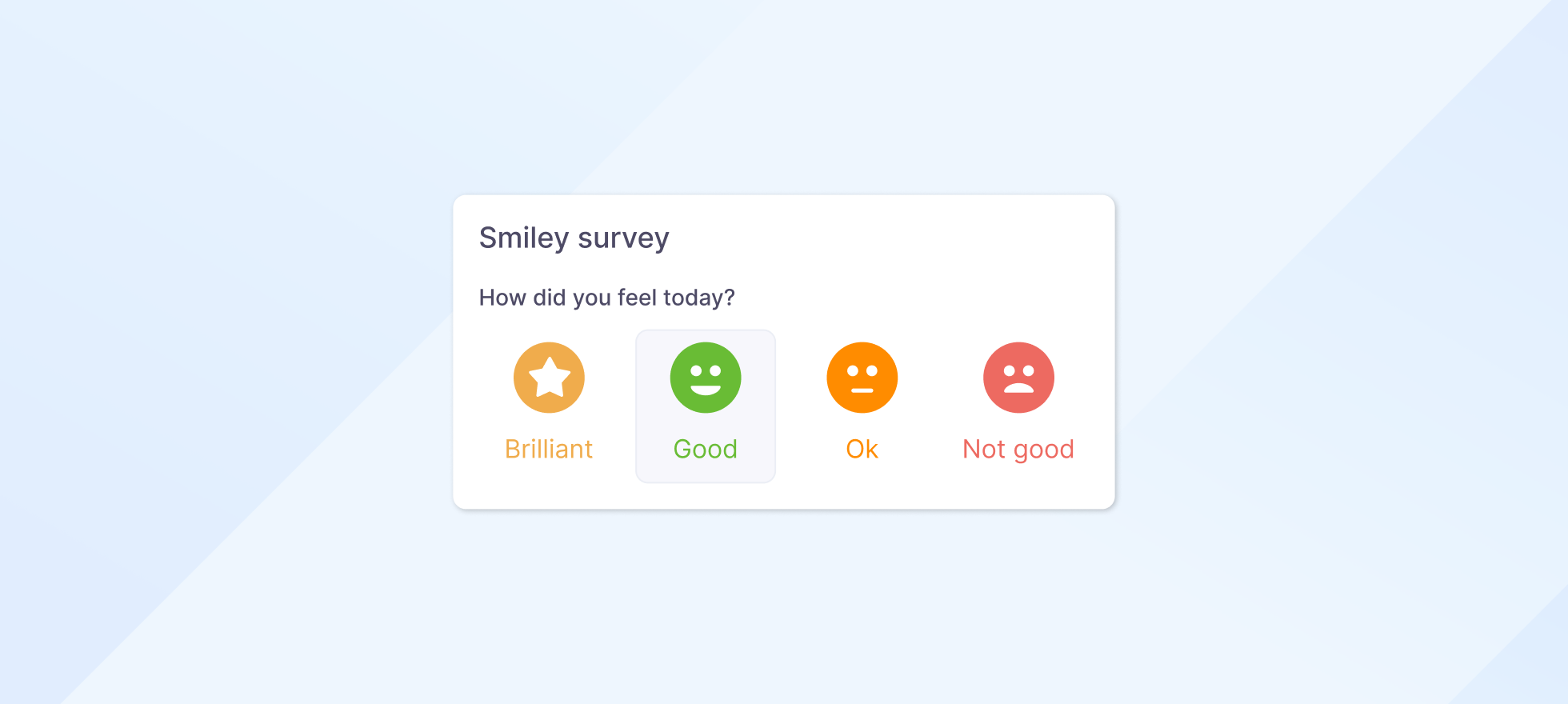
12. Data privacy and protection
Nowadays, businesses have access to a large amount of customer data. And, with the rising cases of cybercrime, customers are becoming increasingly concerned about what happens to their personal information.
In one study, 74% of consumers surveyed said they highly value their data privacy. In addition, 82% are concerned about how companies use their data. A data breach can ruin customer experience and erode brand trust.
🔐 You must demonstrate a continued commitment to ensuring that customers’ data is safe and secure.
How will these trends shape the future of support?
Changing consumer behaviors, tech progress, the increase in connectivity, and the shifting dynamics of society will all have a significant impact on future customer service trends. Here’s a customer service expectation list as far as companies are concerned.
- Clients will increasingly seek more technology-driven and socially responsible services.
- Proactive customer service will no longer be a “nice to have.” Clients will choose companies that send out prompt reminders or notifications about pending product launches.
- Customers will appreciate having options to suggest how companies can improve their services.
- Omnichannel support will become a requirement as the customer experience starts to span across every device and medium.
- Clients expect instant support, whether it’s in-store, online, via social media, or over the phone.
- Proper channel integration ensures that all your channels (physical store, website, social media, mobile app, etc.) function as one. For example, if a customer adds a product to their cart on your website, they will also be able to view and modify this cart on your mobile app.
♻️ AI-driven tech and a growing focus on eco-social responsibility will drive innovation in waste reduction, resource optimization, and sustainable data analysis. Aligning client expectations with business practices is likely to become the norm.
Leverage customer service trends for growth
The support landscape is dynamic, and you have to change and adapt to new customer service technologies.
In 2025 and beyond, we expect these customer service trends to become the modus operandi for most businesses. Indeed, companies prioritizing quality customer service are one step away from reaching stardom.
Frequently Asked Questions (FAQs)
Some of the biggest trends include:
- Omnichannel support (customers expect service across SMS, chat, email, and social)
- Real-time responses
- Personalized and proactive service
- Use of AI and automation to enhance speed and consistency
Textmagic offers a multichannel messaging platform that includes SMS, email, and in-app chat, all manageable from a single dashboard. This allows support teams to simplify communication and ensure customers can reach them via their preferred channel.
Yes. With message templates, contact segmentation, and scheduled messages, you can automate repetitive tasks like follow-ups, confirmations, or reminders, freeing up agents for more complex inquiries.
Personalized service helps customers feel valued and understood, which improves satisfaction and loyalty. It also reduces resolution time since agents are equipped with relevant customer data.
Textmagic allows you to use dynamic fields to personalize SMS and email messages, like addressing customers by name or referencing previous orders. You can also segment contact lists to tailor messages to specific groups.
Related articles
Fitness center and gym SMS solutions + 15 free text templates
Every New Year, fitness clubs see a HUGE increase in...
10+ Best email and SMS marketing software for business
Why rely on a single business communication channel ...
What is number porting? Pros, cons, and business considerations
Are you considering switching mobile providers but a...
20 Email marketing examples to grow your business in 2026
Discover the 20 most effective email marketing examp...
9 Results-driven customer engagement models
Offering a great product or service is no longer eno...



